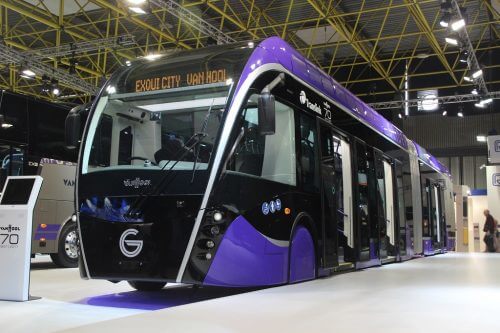
Visitors to Belfast will note that there’s lots of construction activity going on in the city centre right now, one of the more interesting projects being the Belfast Bus Rapid Transit (BRT) scheme, officially branded BRT-Glider. Robin Whitlock reports
The aim of the BRT-Glider scheme is to provide a new and dynamic fast public transport corridor between East and West Belfast – Phase 1 of the project utilising two routes extending east and west, plus a short spur northward serving the Titanic Quarter.
The scheme has been developed and is being implemented by the Northern Ireland Department for Infrastructure (DfI), which intended this new service to be high quality from the outset. The total route length is approximately 15.2miles (24.5km), but consideration is being given to a second phase in which extensions may be added running into the northern and southern areas of the city, depending on the success of Phase 1 and funding availability.
The route, as it stands at the moment, encompasses the WWAY (approximately 6.1miles/9.8km), EWAY (approximately 5.5miles/8.8km) and the CITI, the latter section consisting of a city centre loop and the northwards spur to Titanic Quarter (approximately 1.7miles/2.8km).
According to the DfI’s stated objectives, the Glider vehicles will provide a comfortable environment for passengers, together with installed CCTV for security and safety. There will be real-time information systems for more efficient journey planning and off-vehicle ticketing to speed up the boarding process. Intelligent Transport Systems (ITS) will enable information to be fed through to the internet and mobiles but there will also be audio announcements on the vehicles. ITS will also enable automatic vehicle location so that vehicles are given priority at junctions. The vehicles will also be equipped with free WiFi and USB charging facilities. The entire £90million scheme is scheduled to become operational in September 2018 and many of its constituent sections are already in service or are nearing completion.[…]
By subscribing you will benefit from:
- Operator & Supplier Profiles
- Face-to-Face Interviews
- Lastest News
- Test Drives and Reviews
- Legal Updates
- Route Focus
- Industry Insider Opinions
- Passenger Perspective
- Vehicle Launches
- and much more!


